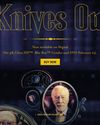
On 12 March 1989, a young computer scientist named Tim Berners-Lee published a memo. He was working at CERN, the European Organisation for Nuclear Research. The thousands of scientists working there needed a way of collaborating over the internet. Berners-Lee had a potential solution. He published his idea under the title Information Management: A Proposal.
It wasn’t exactly a page-turner and the diagrams were completely incomprehensible. But there was enough there to get the project started. This project became the world wide web. Within a year of publishing his initial proposal, Berners-Lee created the first version of HTML, the first web server and the first web browser. The browser was somewhat confusingly named WorldWideWeb.
Thirty years on from the original proposal for the world wide web, a group of designers and developers gathered together for a week at CERN to recreate the experience of using that first ever web browser. You can see the final result at worldwideweb.cern.ch.
Amazingly, you can browse websites made today in a browser that was made three decades ago. There won’t be any styling. There won’t be any scripting. Neither CSS nor JavaScript existed at the birth of the web. But if a website has been built in a robust way, it will still make sense even when viewed in an ancient web browser.
EXTENDING THE WEB
Scientific collaboration was the first use-case for the world wide web but the project wasn’t designed to be limited to that usage. Berners-Lee knew that he couldn’t predict how the web would be used in the future. He therefore designed it to be extensible.
Bu hikaye NET dergisinin April 2020 sayısından alınmıştır.
Start your 7-day Magzter GOLD free trial to access thousands of curated premium stories, and 9,000+ magazines and newspapers.
Already a subscriber ? Giriş Yap
Bu hikaye NET dergisinin April 2020 sayısından alınmıştır.
Start your 7-day Magzter GOLD free trial to access thousands of curated premium stories, and 9,000+ magazines and newspapers.
Already a subscriber? Giriş Yap

Camille Gribbons
UX designer at Booking.com, Camille Gribbons reveals how she first got into the industry

THE 5G UI REVOLUTION
Tris Tolliday describes his vision of a web UI catapulted forwards by 5G

HOW TO SHOWCASE YOUR DEV SKILLS
Aude Barral shares 5 top tips for landing your dream developer job

KNIVES OUT
Murder mystery film, Knives Out, grabbed everyone’s attention, and so did the fun website that promoted it. Oblio tells Tom May how it created its innovative 3D navigation

HOW EMOTIONAL LABOUR HINDERS WOMEN IN TECH
Christine Brewis, head of digital marketing at Studio Graphene, discusses how gender parity in tech has changed over the last ten years, and what more can be done

EDAN KWAN
He swapped life as a singer for a career making eye-popping digital visuals. The Lusion founder chats to Tom May about battling demons, winning awards and where digital advertising is heading

ANDREW COULDWELL
The Brit in LA discusses his new book on design systems, Laying the Foundations

Top 5 Tips For Ensuring Web Content Is Accessible For All
Merlyn Meredith outlines five top tips for ensuring web content is accessible for all

WHAT DOES THE FUTURE HOLD FOR BROWSERS?
Nico Turco examines the state of play with browsers, whether developers should encourage diversity or monopoly and how Google fits into it all

YEARS IN THE MAKING
Exclusively for net: The latest in a series of anonymous accounts of nightmare clients